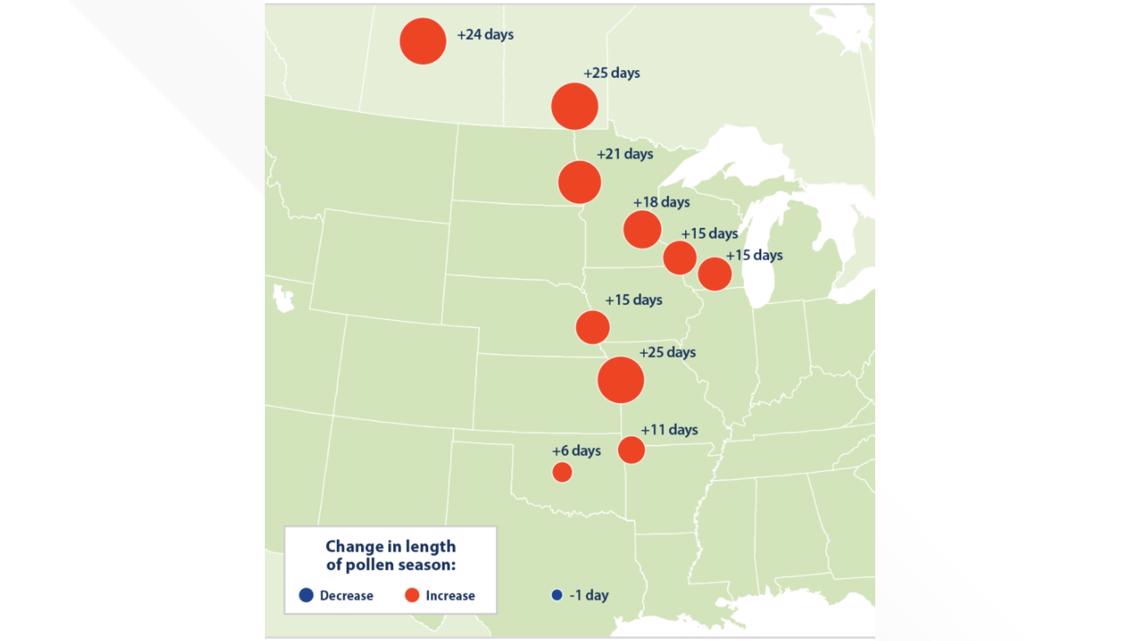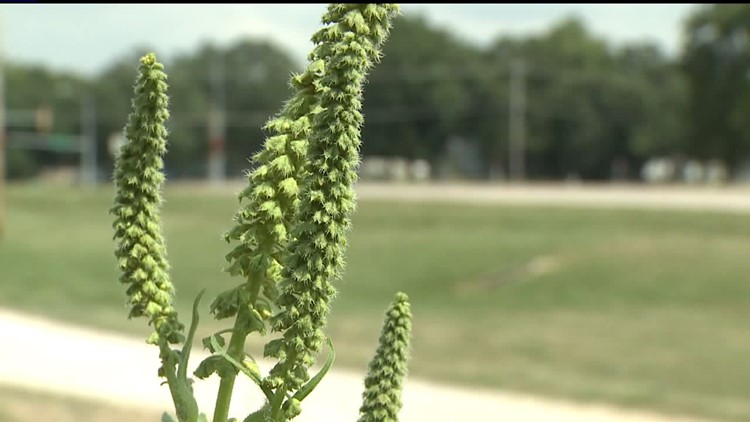MOLINE, Ill. — As we head from late summer into fall, we will be entering ragweed season. Ragweed season could be affected by a warming climate.
From 1995 to 2015, ragweed pollen was collected at different latitudes in 11 cities throughout the U.S. In 10 out of the 11 cities, ragweed season was longer by the end of the experiment.
At each location, pollen spores were counted and identified using a microscope. Pollen counts at stations in the location were analyzed to determine the start and end dates of each year's ragweed pollen season.
Ragweed season length has grown anywhere from 6-25 days. The one city that saw a decrease in length was only by the day. Northern cities saw an increase in length and the southern city saw a decrease in length.


Climate change can affect pollen in many ways.
Warmer spring temperatures can cause plants to start making pollen earlier and warmer fall temperatures can cause plants, like ragweed, to continue to produce later than normal.
Warmer temperatures and increased carbon dioxide allow plants to produce pollen in larger quantities, resulting in a longer pollen season with a higher pollen count.
Changes in the length of a ragweed season can also be linked to the timing of the first frost. The first frost happened later in some of the northern cities that were used during the experiment, allowing ragweed season to last longer.
The data doesn’t show the intensity of ragweed season — just its length.
There's more that can impact the ragweed season, such as variations in temperature and precipitation, extreme weather events like floods and droughts; and changes in plant diversity
Collecting more years of data will provide us with a better picture of ragweed season length.
Here are the symptoms of ragweed allergy:
- Sneezing.
- Runny nose.
- Nasal congestion.
- Headaches.
- Irritated eyes.
- Itchy throat.
Here are some treatments for ragweed allergies:
- Allergy shots.
- Prescriptions must start 12 weeks before ragweed season begins.
- Over-the-counter allergy medicine.
Tips to deal with pollen:
- Ragweed's highest levels are in the morning.
- Keep windows in the car and house closed at all times.
- Pollen can be tracked into a home via clothes, hair, and pets so change clothes after being outside for a long time, shower before bed and wash hands after petting an animal that has been outside



